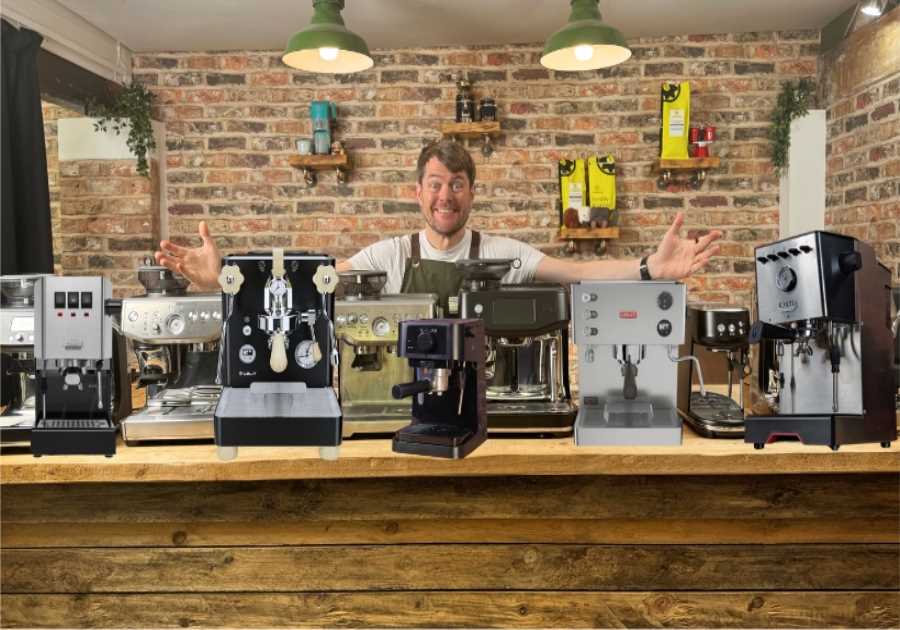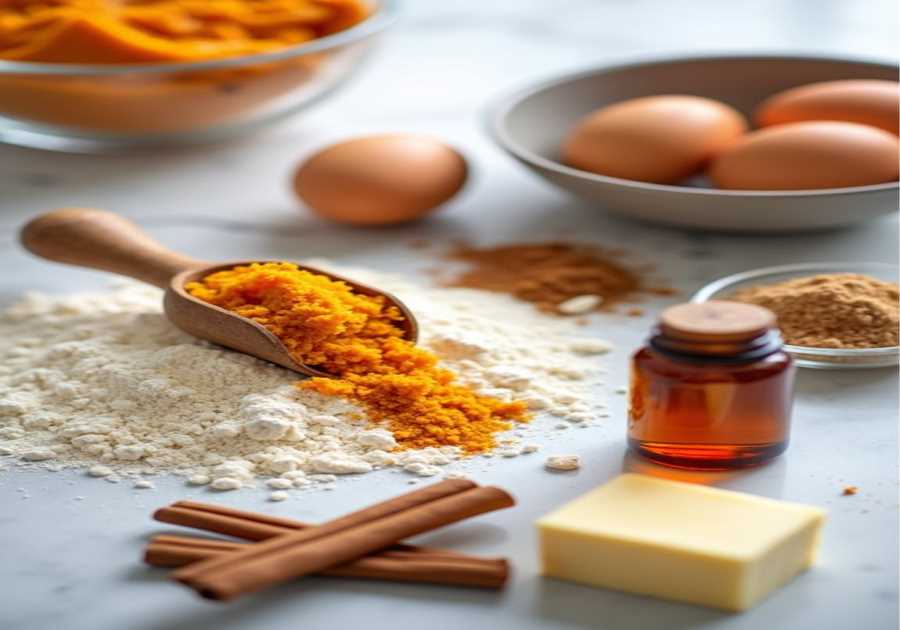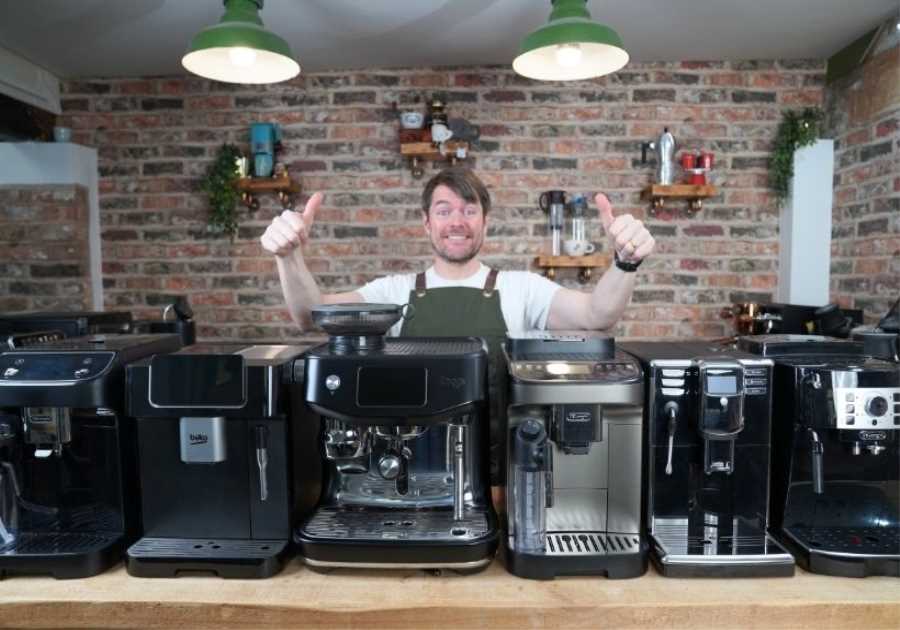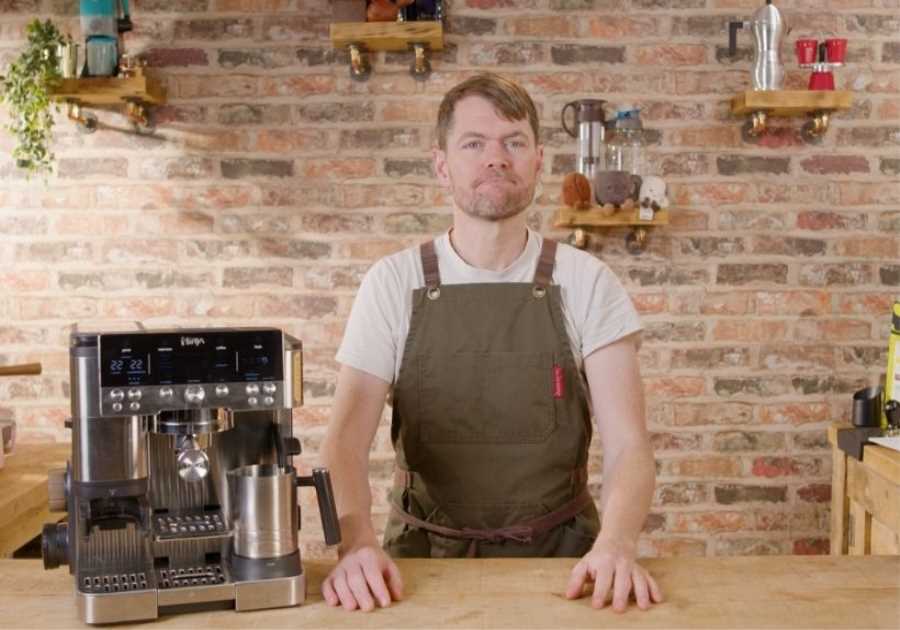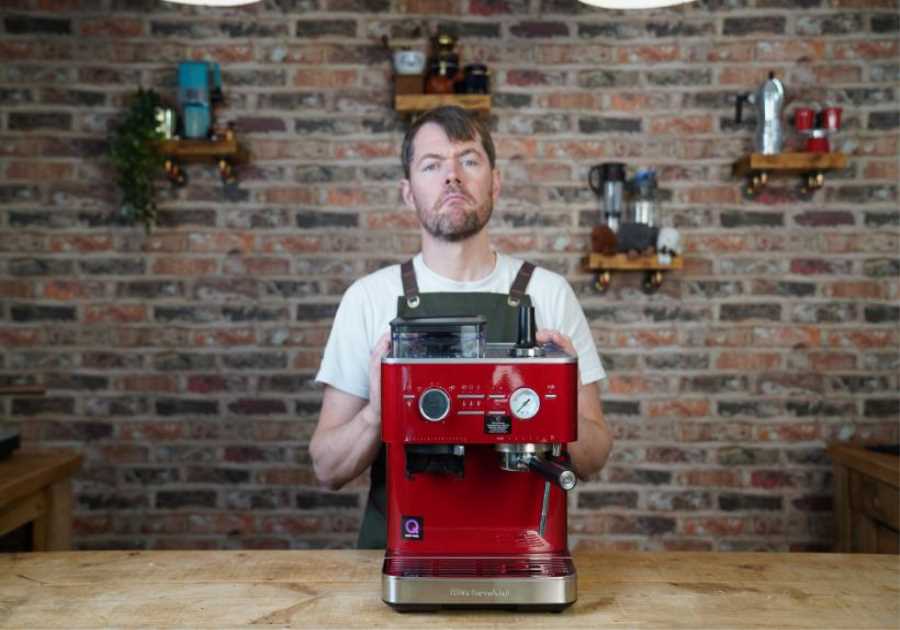It’s fair to say that since the pandemic, more and more consumers have been looking to create café-quality beverages at home. These includes espresso, too.
A large part of this stems from a rise in coffee education. A growing number of roasters and coffee shops now offer courses or classes which help people to understand more about specialty coffee, as well as how to prepare it properly at home.
However, espresso is notoriously difficult to get right. Even the most experienced baristas sometimes struggle to dial in their coffee properly.
So, in line with this, how can people make better espresso at home? To find out, I spoke to Maciej Kasperowicz, Director of Coffee at Trade Coffee, a specialty coffee subscription service in the US. Read on for more of his insight.
You may also like our guide to calibrating your espresso recipes.

How to make better espresso at home
Even in a coffee shop, trained and skilled baristas can sometimes find it challenging to consistently extract excellent espresso. There is an endless number of variables to consider, including dose, yield, grind size, extraction time, water temperature, and more.
Naturally, for people who are less experienced, this task can seem daunting. However, with the right equipment, coffee, and knowledge, making espresso at home becomes more straightforward.
Invest in high-quality equipment
Firstly, it’s crucial to purchase high-quality, reliable equipment if you want to make better espresso at home. A home espresso machine and grinder are both essential.
“You need to have a grinder that not only can grind fine enough for espresso, but that can also make small enough grind size adjustments within that range,” Maciej explains.
Espresso requires a fine grind size because it is extracted over a much shorter period of time and under higher pressure than filter coffee or cold brew – creating a more concentrated beverage.
When it comes to home espresso machines, there are many different models available. Moreover, they also range in quality, price, and type – including manual, semi-automatic, or fully automatic.
“To a certain extent, you get what you pay for with home espresso machines,” Maciej says. “This is why it’s a lot harder to make good espresso at home than it is to make a good pour over.
“Ideally, you should look for a home espresso machine which evenly disperses water through the groupheads,” he adds. “What’s more, it should maintain a stable pressure and temperature throughout the extraction process.”
Maciej also advises home baristas to consider longevity when buying an espresso machine.
“It’s worth paying for a machine with a sturdy build that will be able to withstand years of locking in portafilters and pushing highly pressurised hot water through the groupheads,” he tells me.
Using the AeroPress to make espresso-style drinks
Although higher-end home espresso machines tend to produce better quality espresso, they are also more costly, and therefore less accessible to a wide range of people.
Ultimately, this means some people choose to use the AeroPress to imitate espresso, and create a more concentrated beverage. However, it should be noted that because it uses much less pressure than a traditional espresso machine, the AeroPress doesn’t produce the same results.
“The AeroPress has often been marketed as a budget espresso maker,” Maciej says. “You won’t be able to extract an actual shot of espresso, but it can provide [a similar concentrated coffee] at a much lower cost than an espresso machine.
“To extract espresso-style drinks with the AeroPress, you need to use a metal filter, and ideally Fellow’s Prismo attachment or something similar,” he adds. “Preparing a slightly longer ‘shot’ will also help, as will grinding very fine and stirring vigorously.”
Buy quality coffee
Ultimately, if you’re not using high-quality coffee, it’s impossible to pull excellent espresso shots.
“Espresso is very concentrated, so it’s arguably even more important to use high-quality coffee for espresso than any other brew method,” Maciej says.
Blends are commonly used for espresso as they tend to produce more well-rounded flavour profiles. However, single origin coffee also works for espresso – and works well provided it has a balance of acidity, sweetness, and bitterness.
Furthermore, when using a single origin for espresso, it is much easier to taste the unique characteristics of the coffee.
There are also a range of other factors to consider when choosing a coffee which best suits your preferences. These include:
- Origin – such as Central or South America, Africa, and Asia
- Varieties – like Typica, Bourbon, and Gesha
- Processing method – either washed, natural, honey, or experimental processing techniques (carbonic maceration, anaerobic fermentation, etc.)
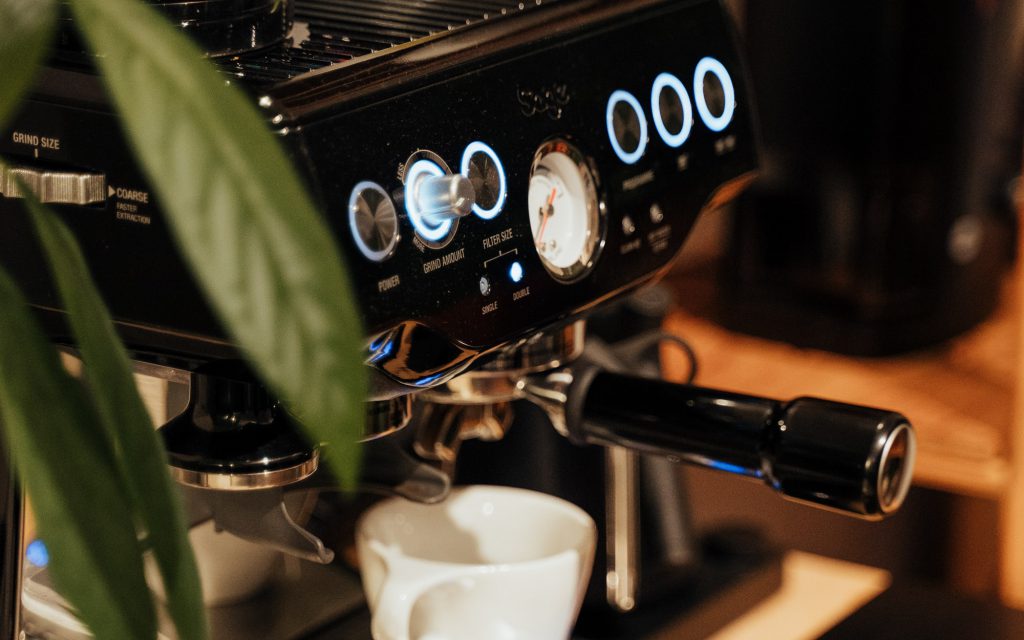
How do you dial in espresso at home?
In coffee shops around the world, baristas tweak a wide range of variables to make high-quality espresso:
- Dose (the amount of ground coffee you use)
- Yield (the total amount of liquid coffee you extract)
- Total extraction time
- Water temperature (ideally between 90°C and 96°C, or 195°F and 205°F)
- Grind size
“The three main variables to focus on are dose (although this is slightly harder when using super-automatic machines), yield, and extraction time,” Maciej explains. “You should only change one variable at a time, too.”
For example, he suggests adjusting the grind size while keeping the dose and yield consistent. This will inevitably have an effect on total extraction time.
“For instance, you can use 18 grams of coffee and extract until you get around 40g of espresso,” Maciej says. He adds that you should then taste your coffee. If the flavours are more bitter, then you will need to use a coarser grind size. Conversely, if the coffee tastes sour then try a finer grind size.
Maciej recommends adjusting the grind size in small increments – while still using the same dose and yield – until you achieve your desired flavour profile.
Adjusting to different recipes
“Assuming that your machine can reach a high enough pressure for espresso, the main factor that could affect your recipe is portafilter basket size,” Maciej tells me.
Let’s say, for example, that a roaster recommends using 19g of coffee.
“If your portafilter isn’t able to contain more than 14g of coffee then you will have to change your dose, yield, extraction time, and grind size,” he explains. “Some lower-price point machines may also use ‘pressurised’ portafilters, which force water through a tiny hole in the portafilter basket to add extra pressure.”
If you have one of these machines, you will need to grind your coffee slightly coarser than usual.
Alternatively, you can also purchase a slightly larger portafilter which can hold more coffee – as long as it will fit into your espresso machine.
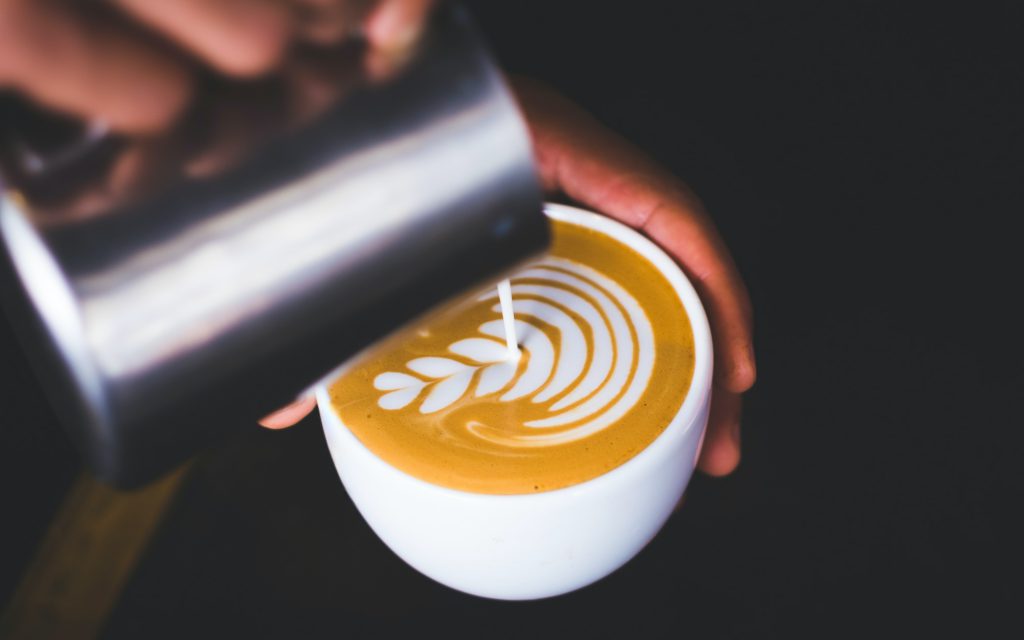
How to choose the best coffee for espresso
Although it certainly takes skill and practice to dial in espresso at home, using high-quality coffee is an important first step.
The first thing to remember is that coffee tastes better when it’s fresh. However, roasted coffee needs to degas (when the beans release gases trapped inside, mainly carbon dioxide), so pay attention to the roast date. Many coffee professionals recommend using coffee which is a week or so past its roast date, so that the release of gases doesn’t impede extraction. Coffee that hasn’t degassed for long enough can end up tasting astringent in the cup.
Secondly, it’s important to keep in mind how you will be drinking your espresso. For example, will you use milk to create a flat white or latte, add water to prepare an americano or long black, or just drink straight espresso?
Your preferred way of consuming espresso will impact which coffee you should use. For instance, if you want to make a milk-based drink, a blend or South American single origin may work best. Alternatively, a single origin Ethiopian coffee can be enjoyed as straight espresso.
In order to find a coffee that best suits your flavour preferences, Maciej recommends looking at what your favourite roaster has to offer for espresso.
“Espresso roasts have been roasted in a way that best highlights their characteristics for this brewing method,” he explains.
However, he adds that once you feel comfortable to experiment with different extraction variables, trying a wider variety of coffees allows you to understand more about which coffees you enjoy.
“I’ve had some super fruity, light-roasted coffees as both espresso and cappuccinos,” he says. “These types of coffees can work really well as espresso and milk-based drinks, even if they aren’t the ones usually featured as espresso roasts.”
Finding coffees to suit your preferences
Looking for new coffees or roasters can be difficult, especially for those who are new to specialty coffee.
“Trade Coffee’s platform asks subscribers some simple questions about how you brew coffee (you can choose espresso as an option), how you drink that coffee (with milk, sugar, or just black), and which flavours you like in coffee,” Maciej explains.
“With every coffee on our platform, I taste and record its characteristics – such as flavour notes, acidity, body, and roast profile,” he adds. “This means that even if one roaster’s dark roast is more similar to another roaster’s medium roast profile, [you can find] a calibrated, steady scale to accurately assess all coffees.”
To streamline the process, Trade then uses this data to recommend certain coffees to subscribers based on their unique, individual preferences. Moreover, users also have access to the entire catalogue.
“Our subscribers can also contact our customer experience team,” he adds. “We’re more than happy to advise on what coffees might work best for each person.”

Pulling perfect espresso shots at home certainly takes time and patience. With enough practice and experience, you’ll gradually see your espresso improve.
As well as this, however, high-quality equipment and great, fresh coffee are also instrumental to success. Starting from here and adjusting your extraction variables will help you find the “sweet spot” of each coffee and make great espresso.
Enjoyed this? Then read our article on how to choose the right specialty coffee gift.
Perfect Daily Grind
Please note: Trade Coffee is a sponsor of Perfect Daily Grind.
Want to read more articles like this? Sign up for our newsletter!
The post How can consumers make better espresso at home? appeared first on Perfect Daily Grind.
By: Zoe StanleyTitle: How can consumers make better espresso at home?
Sourced From: perfectdailygrind.com/2023/04/how-can-consumers-make-better-espresso-at-home/
Published Date: Mon, 17 Apr 2023 05:23:00 +0000

